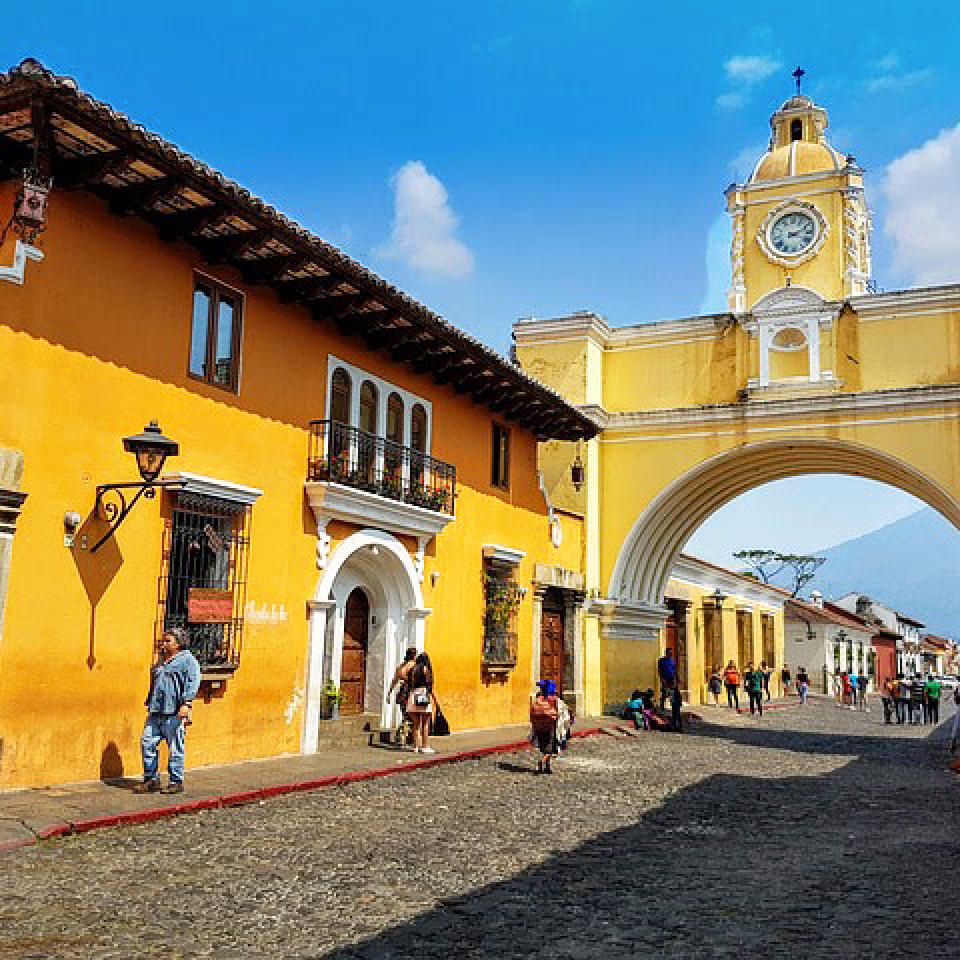Go Travel And Talk is all about exploring our world mindfully and having a positive impact on the places you go and the people you meet. In the course of your travels around this planet and in particular the developing world, you may run across the idea of
"Asset Based Community Development"
I spent 4 years as a guide for GIVE Volunteers, a volunteer abroad organization that practices Asset Based Community Development (ABCD) in the implementation of their projects. Below I'll detail what I learned about Asset Based Community Development throughout this experience, its methodology and tools, how it differs from Needs Based Community Development and I'll offer several different ways you can support Asset Based Community Development throughout your travels.
Author's Note: When speaking about Asset Based Community Development, I try to present it as a methodology that communities can practice without any outside intervention. In other words, I don't want to present communities in the developing world as helpless and dependent on outsiders to affect positive change. However, there are several instances in this piece that pertain directly to the idea of outside intervention, such as contributing to this methodology while traveling, that requires me to speak of it as being influenced by outside forces.
In short, asset based community development involves affecting positive change within a community by identifying and leveraging the community's strengths in a directed and organized manner.
Asset Based Community Development Theory
The theory behind Asset Based Community Development is grounded in the idea that community empowerment happens from the inside out. It ascribes to the belief that communities are strong and full of individuals who are very capable of helping themselves and their fellow community members reach their goals.
While the ABCD Model acknowledges that some outside assistance may be necessary at times, permanent positive change will not be achieved without the community taking primary ownership of driving this change.
Asset Based Community Development Tools
1. Asset Mapping
Communities will better understand how to meet their goals if they have a clear understanding of how their current assets can help them get there. To gain that understanding communities employ "asset mapping", which involves categorizing community assets into 3 categories;
Individuals: Key individuals such as religious figureheads and prominent entrepreneurs who are in positions to influence and mobilize their communities due to their social influence and connectedness.
Institutions: Mapping out institutions such as libraries, parks, and relevant businesses so that communities understand the physical infrastructure they have to help them achieve their goals.
Associations: Is there a local trade organization located in the community? Local labor union? How about things like after-school groups? Any existing organizations can be leveraged to help communities achieve their goals.
2. Capacity Inventory
Skills Overview: The goal of Asset Based Community Development is for communities to utilize every available skillset present in their community before seeking outside intervention. This means making a list of unique skills in the community that may be helpful. Computer programmers, medical technicians, carpenters, welders, and lawyers are all examples of unique skills that a community can utilize in its development goals.
Enterprise Interests: This looks at what enterprises have been undertaken locally in the past and tries to gauge the prospects that community members will pursue similar enterprises in the future. Enterprises may be heavily influenced by geography and natural resources in a community.
Personal Contact List: Here communities simply aggregate the names and contact info for all interested community members. This process, while time-consuming, makes it far easier to mobilize community members.
3. Time Banks
Time Banks are ways in which community members exchange skills and services without a monetary exchange. This not only helps community members save money, but it helps them further develop their skill sets and reinforces strong community bonds by encouraging interaction and a sense of reliance on one another. For example, a carpenter and a baker can collaborate so that the carpenter exchanges X hours of carpentry work for X loaves of bread, hereby removing currency from the exchange of goods and services.
An alternative theory to Asset Based Community Development is Needs Based Community Development.
This essentially entails an outside organization assessing the needs of a community (usually this is done with other community members, but in the most egregious instances this is not done with any community assistance) and then mobilizing external resources to meet those needs.
Asset Based Community Development
Identify key community members
Identify key community assets
Identify community needs
Mobilize and develop community assets in order to meet those community needs
Needs Based Community Development
Identify community needs
Seek out organizations or entities to provide external financial aid or material inputs
How Asset Based Community Development Views Challenges
Asset Based Community Development sees all problems as potential advantages. Here are three problems and three potential ways to go about solving them under the Asset Based Community Development model.
- The quality of schooling is low and kids spend a lot of time out of school? Great, this means they have plenty of free time. Let's develop a constructive and/or educational activity they can devote this free time towards.
- Water quality in a village is poor? Ok, looks like an opportunity for local entrepreneurs to come in and find a solution. Perhaps we can provide training to empower these individuals and connect them to professional guidance to help them achieve their business goals.
- Paternal involvement in childcare is low in a certain village? Looks like an opportunity to empower women with education and an income by establishing a women's cooperative. Women invest far more in their communities than men, so let's help them make this happen.
The Potential Downsides Of Needs Based Community Development
While the intentions of Needs Based Community Development may be good, and it may even produce temporary benefits, the long-term outcomes often look like;
- Perpetuating community weaknesses - Because Needs Based Community Development relies on bringing in external resources to solve the issue, communities can use these outside resources to cover up the weaknesses that have led to past failures. These weaknesses usually grow.
- Reliance on outside intervention - When solutions come from outside a community, the tendency is for communities to build processes, infrastructure and expectations around these outside resources. If this influx of outside resources is then cut off, these processes, infrastructure and expectations are usually ineffective.
- Underutilized potential of community members - If community problems are (temporarily) solved by outside intervention, community members have no reason to expand their skill sets in order to solve future problems.
- Instilling a sense of helplessness - If community members continually see outsiders coming in to help them solve problems, they begin to view themselves as helpless individuals incapable of affecting positive change.
- Increased waste within community - Outside intervention and resources often means outside waste and discarded materials. Small communities are often overwhelmed by these outside resources and they find their way to already-overfilled makeshift landfills.
in 2016, GIVE worked with a small community fishing village on the Pacific coast of Nicaragua to construct a community vocational school made largely of recycled plastic bottles used as bricks, also known as "eco-bricking".
This is an international volunteer project that exemplifies Asset Based Community Development in many ways, here's how:
- GIVE got to know the small beachside community of Jiquilillo and asked community leaders what their strengths and weaknesses were.
- Community leaders informed GIVE that because schooling was low quality, many kids spent a significant time outside the classroom and there was a severe lack of economic opportunities for young people in the community.
- Alongside the community, GIVE developed a plan to construct a vocational school for young people in the community.
- Not only did the construction of the school remove discarded plastic bottles from the community landfills, but GIVE's relationship with the community meant that community members came out to support and help with the construction of this school.
- The community took ownership of this school, and now young community members use this infrastructure to educate other community members, primarily in English.
While its a great tool for self-development and personal growth, travel can be both socially and environmentally harmful.
Practicing Asset Based Community Development along with environmental awareness is essential to minimizing your footprint when you travel, and GIVE is a volunteer abroad organization that does a great job combining these two elements.
If you're not volunteering abroad with an organization like GIVE, here are some other ways in which you can support Asset Based Community Development while you travel;
- Frequent smaller, women-run shops - women have been continually shown to invest more of their revenue back into their communities than men.
- Seek out businesses run by social entrepreneurs, who gauge their business success on community impact over profits.
- See if you can offer your skills/services to communities you visit. Some communities offer English-tutoring for local students, and you can volunteer your time to help tutor.
Get Out And Explore!
If you're looking for ways to invest in yourself, travel is one of the best avenues for personal and professional growth. Get out and see the world, and do your best to do good while you're at it.
Thanks friends, travel well!
N.B If you would like to learn more about Give Volunteers, check out our 'Organisation Feature of the Month' with Go Travel and Talk!





